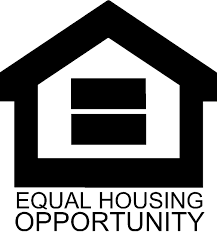
Why the housing crisis isn't what you think
Looking Back at the Storm
Just a few months ago, we warned in these pages that storm clouds were forming over Washington’s housing market. Home prices weren’t just high, they were becoming untethered from local incomes. Interest rates were surging, rents climbing, inventory was tight, and frustration was bubbling over. In response, policymakers rushed to deliver relief. They targeted interest rates, speculators, rent hikes, and investor purchases. On the surface, it looked like we were fighting for affordability.
But if you zoomed out just a little, a troubling pattern began to emerge. Everyone had an answer, but no one seemed to be asking the right question. The crisis wasn’t just economic. It was directional. The policies weren’t just incomplete. They were aimed at the wrong villain.
Harvard Confirms the Forecast
In June, Harvard’s Joint Center for Housing Studies (JCHS) released its 2025 State of the Nation’s Housing report. For those of us tracking housing full time, it read like a slow-motion confirmation of everything we’ve already felt on the ground.
Their conclusion? The affordability crisis is real, and it’s spreading. Nearly half of all renters now pay more than 30% of their income on housing. First-time buyers are increasingly locked out, especially in fast-growing areas. Builders can’t keep up, local opposition blocks infill projects, and government solutions are either sluggish or misaligned. The bottom line: we’re millions of homes short, and the gap keeps growing.
What the Harvard study did best wasn’t offering new revelations. It was organizing the chaos. It laid bare how a slow-burning housing shortage, neglected for over a decade, has now collided with rising interest rates, demographic shifts, and outdated policy frameworks. The result isn’t a mystery. It’s a backlog. A bottleneck. A breakdown in the housing ladder that every income level depends on.
In short: we didn’t imagine the storm. It’s here. And it didn’t blow in overnight. It was built into the forecast.
Olympia’s Patchwork Fixes
In Washington state, lawmakers didn’t sit idle. They passed several laws over the past two sessions aimed squarely at the affordability conversation. And while the effort is commendable, the diagnosis still misses the mark.
HB 1110 (2023): Middle Housing Reform
This bill was a major win on paper: a YIMBY-style (Yes, In My Backyard) attempt to legalize duplexes, triplexes, and cottage clusters in cities that previously allowed only single-family homes. But as we’re starting to see, local implementation has been slow and full of loopholes. Cities are pushing back. Permitting systems didn’t change. The promise of new homes hasn’t yet materialized at scale. It’s still early, but the warning signs are clear: HB 1110 risks becoming another well-meaning law that dies in the details.
HB 1217 (2025): Rent Caps
This session’s biggest headline grabber, HB 1217, imposed limits on how much landlords can raise rent each year. The intent is noble: prevent price gouging and protect renters from displacement. But the law also discourages new investment in rental housing, especially in older buildings that desperately need upgrades. Long-term, rent caps can strangle the very supply renters rely on. We need housing to be livable, plentiful, and responsive, not frozen in amber.
SB 5496 (2025): Investor Ownership Limits
The most recent move out of Olympia tries to crack down on bulk home purchases by institutional investors. Lawmakers cited concerns that large firms were buying up starter homes, converting them to rentals, and boxing out everyday buyers. Again, the motive is easy to understand, but the policy itself oversimplifies the issue. In most markets, investor activity follows shortages. It doesn’t cause them. If anything, limiting who can buy homes without addressing how many homes we’re allowed to build is a bit like rationing water during a drought while ignoring the broken dam upstream.
Together, these bills are symptoms of a political system looking for fast answers to a slow-building crisis. Each tries to redistribute the pain, but none fundamentally increase the supply of homes. Without more homes, we’re just playing musical chairs with people’s lives. And the music is speeding up.
At times, we’ve all been caught in the trap thinking these kinds of fixes were part of the solution. But I’ve come to realize: we’ve been solving for the wrong equation.
From Forecast to Fix: How We Misread the Problem
For a while, I bought into it. I’ve echoed the talking points. Interest rates were the enemy. Rents were the problem. Investors were to blame. And to be fair, each of those things felt like a reasonable culprit in the moment. They still do, on the surface.
But now, standing on the other side of back-to-back legislative sessions, a major Harvard report, and another surge of well-meaning but misfiring policies, I see it differently. These weren’t solutions, they were diversions. Pressure valves. Political novocaine.
The truth is, we aren’t just facing a supply shortage. We are facing a directionless response to it.
That’s what makes the 2025 legislature’s third big move, SB 5496, limiting institutional homebuyers, such a perfect case study. The outrage made sense: Wall Street firms shouldn’t be snapping up homes meant for working families. But here’s the uncomfortable reality: most investors don’t create scarcity. They capitalize on it. They’re not the storm. They’re just paddling in it. If there were enough homes for everyone, bulk buyers wouldn’t be able to outbid us.
The same goes for rent caps and zoning reform. On paper, they sound like bold responses to rising prices. But without the systems and incentives to actually produce more housing, they risk becoming hollow gestures. The needle doesn’t move.
We keep patching pain points while ignoring the pipeline.
A Different Lens: YIMBY, “Build Baby Build,” and the Supply Chain Truth
This is where some people point to the YIMBY movement, and say, “See? We’ve got the answer. Build more housing. Done.” And at a glance, that sounds like what we’ve been saying all along.
But let’s go deeper. YIMBYism is more than just supporting new development. It’s a mindset shift. It challenges the idea that protecting neighborhood “character” or resisting change is somehow virtuous. It re-frames growth as something healthy, something necessary. YIMBYs don’t just want more housing. They want policy systems that welcome it.
Then came Build, Baby, Build, a bold 2024 book from economist Bryan Caplan that turned the YIMBY thesis into a sweeping argument for radical deregulation. It asked what might happen if cities actually let people build as much as the market demanded, where they wanted, and at the density they needed. The answer? A surge in supply. A drop in prices. A more flexible, mobile, and fair society. Not because we subsidized our way there, but because we got out of our own way.
But even that framing still misses something important.
This isn’t just about increasing supply for the sake of affordability. It’s about recognizing how every major housing challenge we face, displacement, inequality, homelessness, gentrification, stagnant wages, even declining birth rates, ties back to one basic truth: when people can’t find homes, everything else breaks.
If we keep treating housing like a zero-sum game, one where every new project is a threat and every price hike is an injustice, we’ll keep missing the bigger picture.
The real crisis isn’t that homes are too expensive. It’s that we don’t have enough of them, in enough places, to meet the needs of the people already here.
And if that sounds like a “DUH,” maybe that’s the point. Maybe we’ve been so distracted by symptoms, we stopped treating the disease.
Peeling Back the Final Layer: It Was Always About Supply
If you’ve followed the story this far, it might feel like we’ve arrived at a giant, obvious conclusion: “Just build more housing.” But that’s not quite it. Because this isn’t just about supply. It’s about how housing supply shapes everything else. It’s about how years of underbuilding created the conditions for investor takeovers, rent spikes, zoning wars, and generational gridlock. It’s about how the entire housing conversation has been shaped by scarcity.
We blamed Wall Street for acting like landlords. We blamed landlords for acting like monopolies. We blamed developers for chasing profits. But what we never did, until recently, was step back and ask: what would happen if there were simply enough homes? Not government-run homes. Not subsidized experiments. Just more homes, across every price point, in every zip code, built fast enough to keep up with demand.
The hard truth? That kind of abundance doesn’t come from regulation. It comes from removing the bottlenecks. It comes from changing the incentive structures. It comes from fixing the supply chain, not the literal materials and labor, but the political and procedural gauntlet that delays projects, drains budgets, and keeps communities frozen in time.
If that sounds like an unglamorous fix, that’s because it is. There’s no ribbon-cutting for a permit streamlining code. No headlines for a zoning rewrite that quietly welcomes missing middle homes.
But that’s where the change begins.
What Now? Three Steps Local Leaders Can Take
We don’t need to wait for a miracle. We just need to start doing what works.
Cities should stop treating new housing as an intrusion and start treating it as infrastructure. Just like roads and schools, housing is what makes communities functional. Growth is not a crisis. It’s a signal of vitality. Let’s plan for it.
Permitting timelines, design reviews, and duplicative hearings are killing small projects before they start. Local governments can modernize and accelerate their approval processes without sacrificing public input or safety. The goal isn’t fewer rules. It’s smarter ones.
This is cultural as much as political. REALTORS®, community leaders, and policymakers need to tell a different story: one that champions homebuilding not as a giveaway, but as a shared solution. When we stop gatekeeping growth, we start unlocking opportunity.
Final Word
We started this year warning of storm clouds. Today, we’re acknowledging that the real threat wasn’t the weather. It was the foundation. When we talk about fixing housing, it’s not about making prices collapse. It’s about ending the spiral. In a healthy market, supply brings stability. It keeps prices from outrunning wages and helps more families stay rooted in the communities they love. We’ve spent years solving for symptoms, blaming the easy villains, and reacting instead of preparing. But here’s the good news: once you see the problem clearly, the path forward gets a lot less cloudy.
It’s not radical. It’s not even new. It’s just the one thing that fixes all the rest.
Build. For real this time.



